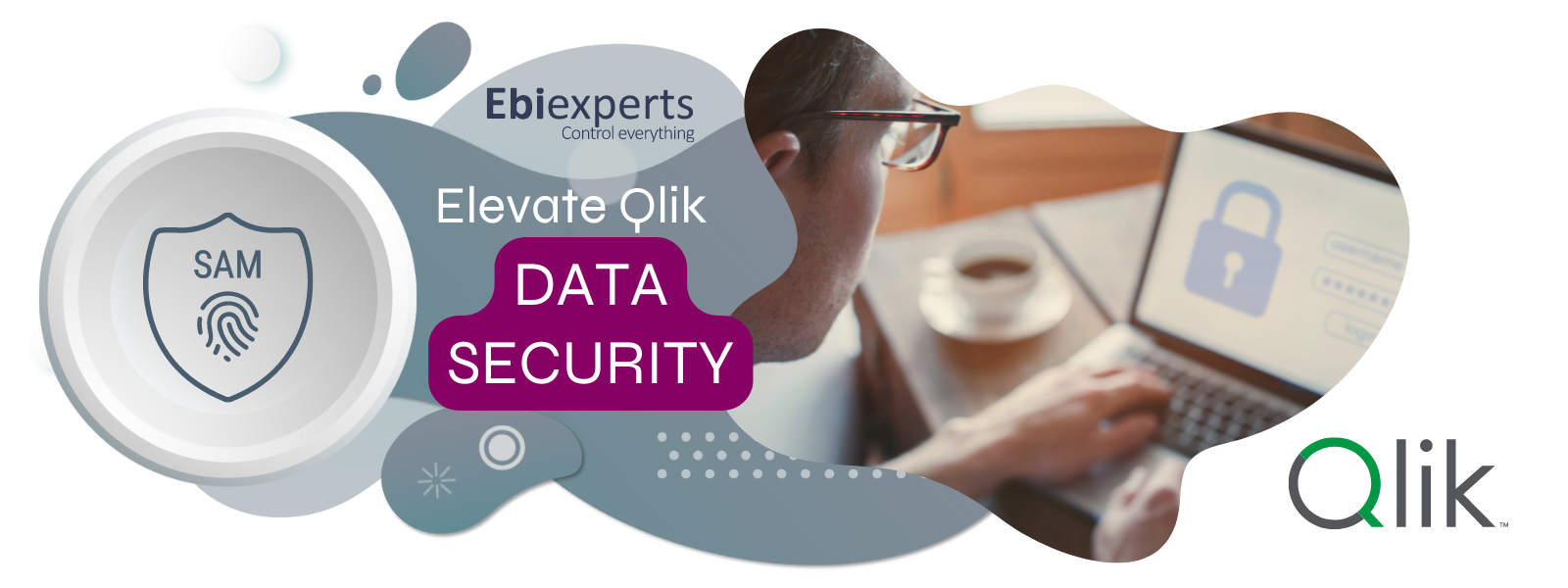Understanding Section Access Manager (SAM) for Qlik
In today's data-driven business landscape, ensuring the security and proper management of sensitive information is paramount. Enter Section Access Manager (SAM), a powerful tool designed to revolutionize data security within Qlik applications. This innovative solution automates access control, streamlines security processes, and enhances overall data governance. Let's delve into the world of SAM and explore how it can transform your organization's approach to data security.
The Power of Automation in Data Security
Section Access Manager (SAM) for Qlik represents a significant leap forward in automating data security and access management. By leveraging the Qlik QMC API and external security system tables, SAM provides real-time, no-code management of access permissions. This automation eliminates the need for manual coding, significantly reducing the complexity and potential for errors in managing data access.
Key benefits of SAM's automation include:
- Streamlined security processes
- Reduced risk of human error
- Faster implementation of access changes
- Improved compliance with data protection regulations
Core Features of Section Access Manager
SAM comes packed with a range of features designed to enhance your Qlik environment's security and efficiency:
- Real-time Access Control: Instantly update and manage user permissions without downtime.
- Automatic Security Assignments: Seamlessly assign and revoke access based on predefined rules.
- Configurable Cache: Set custom refresh cycles to balance performance and security needs.
- Comprehensive Audit Capabilities: Maintain detailed logs for compliance and troubleshooting.
- Seamless Integration: Works flawlessly with both Qlik Sense Client-Managed and Qlik Cloud (November 2024) environments.
These features work in concert to provide a robust, flexible security solution that adapts to your organization's unique needs.
Addressing Common Data Security Challenges
SAM tackles several persistent challenges in data security management:
- Complexity of Manual Coding: By automating security assignments, SAM eliminates the need for complex, error-prone manual coding.
- High Costs of Traditional Access Management: Automation reduces the man-hours required for security management, leading to significant cost savings.
- Risks Associated with Employee Churn: SAM enables immediate change, onboarding and offboarding, mitigating risks associated with changing personnel.
By addressing these challenges, SAM not only enhances security but also improves operational efficiency across the board.
Strategic Benefits for Businesses
Implementing SAM in your Qlik environment offers numerous strategic advantages:
- Enhanced Data Security: Granular control over data access reduces the risk of unauthorized access and data breaches.
- Operational Efficiency: Automated processes for changing rights, onboarding and off-boarding is instant and saves time and resources.
- Cost Reduction: Less manual intervention means lower operational costs and fewer resources dedicated to security management.
- Improved Compliance: Robust audit trails and access controls help meet data governance standards and regulatory requirements.
These benefits combine to create a more secure, efficient, and compliant data environment.
Real-World Applications and ROI
Organizations implementing SAM have reported significant improvements in both operational efficiency and security. To help businesses quantify the potential benefits, an ROI calculator is available to estimate:
- Reduction in manual labor costs
- Decreased risk of data breaches
- Improved compliance posture
- Time saved on security management tasks
Real-world case studies have shown that SAM can lead to:
- Up to 80% reduction in time spent on access management
- Significant decrease in security-related incidents
- Improved audit outcomes and regulatory compliance
Understanding Section Access in Qlik Sense
To fully appreciate the value of SAM, it's essential to understand the fundamentals of Section Access in Qlik Sense:
- Definition: Section Access is a security feature that controls user access to specific data within a Qlik application.
- Purpose: It ensures data confidentiality and compliance with data protection laws by restricting access based on user roles and attributes.
- Implementation: Section Access is configured through security tables within the Qlik Sense load script, defining user levels, identification, and data access permissions.
Advanced Section Access Techniques
SAM builds upon these foundational concepts to offer advanced Section Access management:
- Dynamic Data Reduction: Automatically adjust data visibility based on user attributes and roles.
- Identity Provider Integration: Seamlessly connect with GRC and Access providers for streamlined authentication.
- Scheduled Reloads with Impersonation: Ensure data reloads respect Section Access settings by attributing tasks to app owners.
Best Practices for Implementing SAM
To maximize the benefits of Section Access Manager, consider the following guidelines:
- Thorough Testing: Simulate various user scenarios to ensure proper access control.
- Simplicity First: Start with simple access rules and gradually increase complexity as needed.
- Regular Reviews: Periodically assess and update access rules to align with evolving business needs.
- User Education: Train users on the importance of data security and their role in maintaining it.
Conclusion: Empowering Data Security with SAM
Section Access Manager represents a significant advancement in Qlik data security management. By automating complex processes, enhancing operational efficiency, and providing robust security controls, SAM empowers organizations to protect their sensitive data while streamlining their workflows.
As data continues to play an increasingly critical role in business decision-making, tools like SAM become indispensable for maintaining a secure, compliant, and efficient data environment. By implementing SAM, businesses can confidently navigate the complex landscape of data security, ensuring that their valuable information remains protected while still accessible to those who need it.
To fully harness the power of SAM and transform your organization's approach to data security, consider scheduling a demonstration or consultation with a product expert. With SAM, you're not just implementing a security tool; you're investing in the future of your data management strategy.



